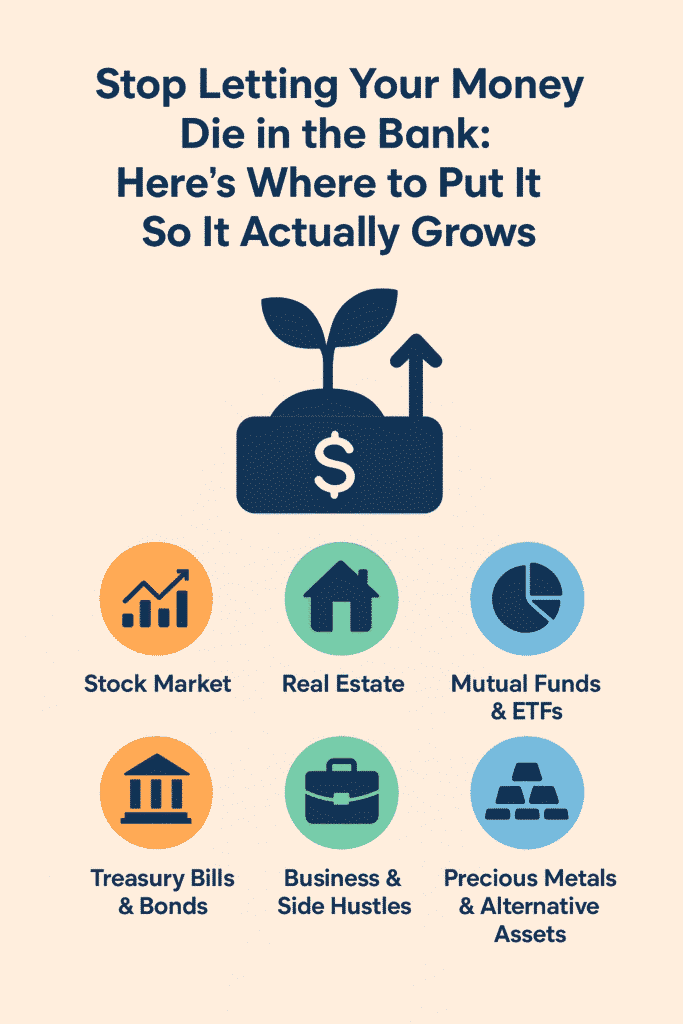Smart Investment Options to Let Your Money Grow

Let’s be honest. You work hard for your money. You save it, you’re responsible, and you dutifully deposit it into your savings account at the bank. It feels safe. It feels smart.
But here’s the uncomfortable truth: that money isn’t just sitting there—it’s slowly dying.
Why? Because of a silent wealth killer called inflation. And the solution is simple: moving your money into the right investment vehicles where it can grow instead of shrink.
The Non-Negotiable Foundation
Before we talk about growth, we need to talk about safety. You still need quick, easy access to cash for emergencies and short-term goals. This is the only job for your standard savings account.
The High-Yield Savings Account (HYSA): Your First Investment Step
This is your first and easiest move. A High-Yield Savings Account is just like a regular savings account, but it offers a significantly higher interest rate—often 20 to 25 times higher than traditional banks.
Best Investment Use: Emergency fund (3–6 months of expenses), money for a down payment, or any cash you need safe and liquid.
Risk: Very low (FDIC insured).
Growth Potential: Low, but it beats inflation.
Real Growth Investment Options
1. The Stock Market (Index Funds & ETFs)
Instead of betting on one company, you can buy a tiny piece of hundreds of companies at once. Index funds and ETFs are the ultimate beginner-friendly investment strategy.
Best for: Long-term growth (retirement, wealth building).
Returns: Historically 7–10% annually.
Risk: Moderate to high short-term volatility.
2. Retirement Accounts (Tax-Advantaged Investments)
Your 401(k) and IRA aren’t investments themselves, but they hold investments and supercharge them with tax benefits.
- 401(k): Take advantage of employer match (free investment money).
- IRA: Grow tax-deferred (Traditional) or tax-free (Roth).
3. Real Estate (Without Being a Landlord)
Owning properties is tough, but Real Estate Investment Trusts (REITs) make it easy.
Best for: Diversifying your portfolio & earning dividends.
Risk: Moderate (tied to real estate market).
How to start: Buy REITs directly or via ETFs.
Action Plan to Start Investing
- Build your emergency fund in a HYSA.
- Max out your 401(k) employer match.
- Open an IRA and contribute yearly.
- Choose a low-cost index fund as your first investment.
- Diversify over time with bonds, real estate, and alternative investments.
The Bottom Line
Moving your money from a dying savings account to a growth-oriented investment portfolio is the most important step toward financial freedom. It’s not about gambling—it’s about harnessing compound growth.
Stop letting your money die. Put it to work in the right investment opportunities and watch it grow.
